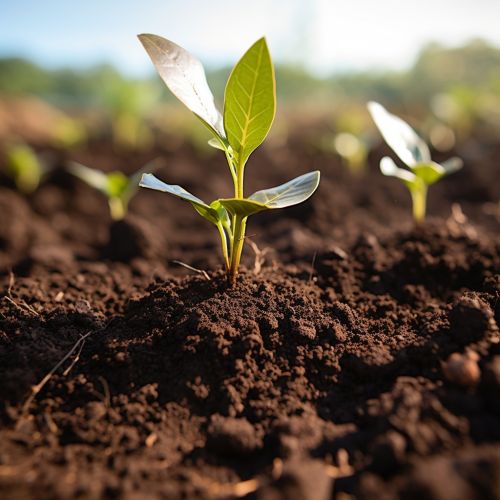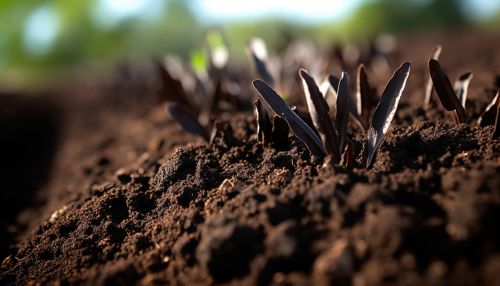Terra preta
Introduction
Terra preta, also known as Amazonian dark earth or black earth, is a type of very dark, fertile anthropogenic soil found in the Amazon Basin. It is derived from indigenous soil management practices that incorporate charcoal, bone, and other organic materials into the earth. This results in a soil with unique properties and high nutrient content, making it highly desirable for agriculture.


Origins and History
Terra preta is believed to have been created by pre-Columbian indigenous populations in the Amazon Basin, between 450 BCE and 950 CE. The exact methods used to create this soil are not fully understood, but it is known that it involved the intentional incorporation of charred plant material, animal bones, and other organic waste into the soil. This practice was likely a response to the typically poor fertility of Amazonian soils, and allowed for more intensive agriculture in these areas.
The discovery of terra preta has challenged traditional views of the pre-Columbian Amazon. It suggests that these societies were more advanced and populous than previously thought, as the creation of terra preta requires a sophisticated understanding of soil science and a high level of social organization.
Characteristics
Terra preta is characterized by its dark color, high organic matter content, and high nutrient levels. It is rich in nitrogen, phosphorus, calcium, zinc, and manganese, among other nutrients. The soil also has a high cation-exchange capacity, meaning it can retain and supply nutrients to plants very effectively.
One of the most distinctive features of terra preta is the presence of biochar, a form of charcoal that is extremely stable and can remain in the soil for thousands of years. Biochar is believed to play a key role in the fertility of terra preta, as it can hold onto nutrients and water, and provide habitat for beneficial soil microbes.
Formation and Maintenance
The formation of terra preta involves the incorporation of charred organic material, animal bones, and other waste into the soil. This material is typically burned in a low-oxygen environment, a process known as pyrolysis, which results in the creation of biochar. The biochar is then mixed into the soil, along with other organic materials.
Maintaining the fertility of terra preta requires continual additions of organic material. This can include crop residues, animal manure, and other waste products. The soil also needs to be managed carefully to prevent erosion and maintain its structure.
Agricultural Use
Terra preta is highly prized for its agricultural potential. Its high nutrient content and excellent water and nutrient holding capacity make it ideal for crop production. In the Amazon, it is often sought after by local farmers, who may go to great lengths to obtain it.
The use of terra preta can significantly increase crop yields, and it is particularly effective for growing nutrient-demanding crops such as maize. It can also improve soil health and sustainability, by increasing soil organic matter and enhancing soil microbial activity.
Environmental Impact
The creation and use of terra preta can have significant environmental benefits. The incorporation of biochar into the soil can sequester carbon, helping to mitigate climate change. Additionally, the improved soil fertility can reduce the need for synthetic fertilizers, which can have negative environmental impacts.
However, the production of biochar for terra preta can also have environmental costs, particularly if it involves the burning of large amounts of biomass. Care must be taken to ensure that this process is carried out sustainably.
Terra Preta Today
Today, there is growing interest in the potential of terra preta to improve soil fertility and combat climate change. Research is being conducted into the methods used to create terra preta, with the aim of replicating them in other parts of the world.
There is also interest in the potential of terra preta to contribute to sustainable agriculture and food security, particularly in regions with poor soil fertility. However, there are still many challenges to be overcome, including the need for large-scale production of biochar and the development of effective methods for incorporating it into the soil.
